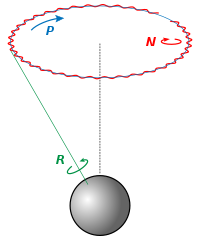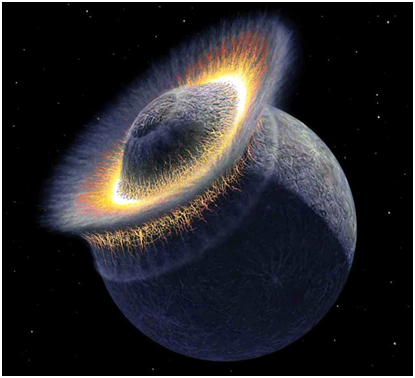You are using an out of date browser. It may not display this or other websites correctly.
You should upgrade or use an alternative browser.
You should upgrade or use an alternative browser.
Australian open indoor event
- Thread starter adil1972
- Start date
D
Deleted member 307496
Guest
January is Summer in Australia.
January is Summer in Australia.
i dont understand how its summer in australia
TheFifthSet
Legend
No need, its hot as heck in australia that time of year.
sixone90
Hall of Fame
i dont understand how its summer in australia
Go back to school and ask your teacher how the Earth works
is Australian open an indoor event, since it is played in winter january
It's not a calendar or clock or even a door that makes a tennis event indoors. It's a permanent or closed retractable roof. The main show court at the Australian Open (Rod Laver Arena???) has a retractable roof. Sometimes it's an outdoor event, sometimes indoor. Most of the courts at the Open have no roof.
Last edited:
RF20Lennon
Legend
i dont understand how its summer in australia
Different lattitudes and also below the equator! their winter comes during june july ish
Go back to school and ask your teacher how the Earth works
BAHAHAHAHAHA.
Tennis_Hands
Banned
They have an "extreme heat policy" at the tournament, I'm guessing this should be your first clue that it isn't winter there.
You are wrong.
They have "extreme heat policy" because of the global warming.
You know, just in case that a heat wave strikes in the middle of the winter. For, like 4-5 months.
:twisted::twisted::twisted:
Timbo's hopeless slice
Hall of Fame
i dont understand how its summer in australia
I read somewhere the other day that 48% of americans don't believe in evolution..
I don't know if it that's true, but golly, when i see a question like that I just shake my head!
I don't know if it that's true, but golly, when i see a question like that I just shake my head!
If you think it is so simple, can you explain _why_ it is summer in the southern hemisphere in January?
vive le beau jeu !
Talk Tennis Guru
finally a serious challenger for the TTW geography contest... too bad Nadal_Freak left us a long time ago.i dont understand how its summer in australia
kOaMaster
Hall of Fame
If you think it is so simple, can you explain _why_ it is summer in the southern hemisphere in January?
seriously, if you visited school for 6-9 years and you're not at least able to say something like "because of the sun" I'd call you ********.
BHud
Hall of Fame
i dont understand how its summer in australia
Rack him! An all-time classic TW thread!
tistrapukcipeht
Professional
i dont understand how its summer in australia
What's heavier: 1Lb of wool or 1Lb of gold??
If you think it is so simple, can you explain _why_ it is summer in the southern hemisphere in January?
Here's a very simplified answer, and something most 5th graders have learned.
We live on a planet.
This planet is called Earth.
The Earth rotates around the sun. (this has been proven, btw)
The Earth also spins on an axis.
This axis is not vertical, but tilted.
This tilt means that at any time during the year, either the northern or the southern hemisphere will be the recipient of more of the sun's energy.
When the energy is most direct on a certain hemisphere, that part of the earth will experience summer.
In Australia, this falls in line with a month on our calendar that is called January.
I hope this helps.
For more information follow this link....... https://www.google.com/
Djokodal Fan
Hall of Fame
i dont understand how its summer in australia
Trolling of highest order!
President
Legend
Is Australia an island or a continent? What is the difference between the two?
Australia is normally considered too big to be an island. It also sits on its own tectonic plate, unlike Greenland for example (another huge island) which sits on North America's. Therefore it is usually defined as a continent.
Here's a very simplified answer, and something most 5th graders have learned.
We live on a planet.
This planet is called Earth.
The Earth rotates around the sun. (this has been proven, btw)
The Earth also spins on an axis.
This axis is not vertical, but tilted.
This tilt means that at any time during the year, either the northern or the southern hemisphere will be the recipient of more of the sun's energy.
When the energy is most direct on a certain hemisphere, that part of the earth will experience summer.
In Australia, this falls in line with a month on our calendar that is called January.
I hope this helps.
For more information follow this link....... https://www.google.com/
This is a fine explanation but misses one key point -- that the tilt of the rotation axis to the plane of the Earth orbit does not change as Earth goes around the sun. In any case, while not too complicated, I doubt most people would be able to produce this explanation right away.

What's heavier: 1Lb of wool or 1Lb of gold??
What would you rather drop on your foot?
This is a fine explanation but misses one key point -- that the tilt of the rotation axis to the plane of the Earth orbit does not change as Earth goes around the sun. In any case, while not too complicated, I doubt most people would be able to produce this explanation right away.
So you were just trolling.
And if I'm reading your post correctly we're saying the exact same thing. The north or south pole is always pointing at the same point in space, causing the change in where on earth is receiving the direct sunlight during its orbit.
Big_Dangerous
Talk Tennis Guru
i dont understand how its summer in australia
F***ing hemispheres, how do they work?
:lol:
vive le beau jeu !
Talk Tennis Guru
The radius of the sun's orbit around the Earth's axis symmetry varies throughout the year, being smallest when summer is in the northern annulus and largest when it is summer in the southern annulus.i dont understand how its summer in australia

from: http://theflatearthsociety.org/wiki/index.php?title=Seasons
augustobt
Legend
i dont understand how its summer in australia
oh god, why?
Australia is normally considered too big to be an island. It also sits on its own tectonic plate, unlike Greenland for example (another huge island) which sits on North America's. Therefore it is usually defined as a continent.
See, I never knew the tectonic plate angle to this question. That is why I love this board.
So you were just trolling.
And if I'm reading your post correctly we're saying the exact same thing. The north or south pole is always pointing at the same point in space, causing the change in where on earth is receiving the direct sunlight during its orbit.
I was just pointing out that while nearly everyone knows that the seasons are switched between the hemispheres, the actual physical explanation of that is not that trivial.
For instance, why does the axis of the rotation not change with respect to the orbital plane? I think this is a result of some gyroscopic effect, but I am not sure.
Take the Moon, for example. It is phase-locked with the Earth -- we never see "the dark side" (it is not really always dark, of course). Why does not the same thing happen with the Earth with respect to the sun?
Monsieur_DeLarge
Semi-Pro
Take the Moon, for example. It is phase-locked with the Earth -- we never see "the dark side" (it is not really always dark, of course). Why does not the same thing happen with the Earth with respect to the sun?
Tidal locking is a consequence of distance, the bodies' masses, and time. Although the moon is much smaller than the sun, its closer proximity means it exerts a greater tidal influence overall (about 2.5x greater, as far as I remember), so the moon has been locked to the earth first.
Regards,
MDL
Let me set the record straight.
December to February is summer in Australia.
Late Jan and Feb is the hottest time of the year.
Melbourne has not had an extremely hot summer in 3 years. Three years ago the temp hit 48 degrees on a particular day and you also had bushfires blazing 3 hours away.
I may be wrong but I don't recall the closed roof policy being invoked for heat at the past 3 Opens.
Melbourne is also notorious in Australia for producing 4 seasons in a day. I've seen it hail on a nice sunny day when there wasn't a cloud in the sky. The roof was originally installed because of the rain.
Melbourne Park is set to get 2 more retractable roofs.
Australia is a country, island and a continent. We don't touch any other country, we are completely surrounded by water.
Op troll or not, there you have it.
December to February is summer in Australia.
Late Jan and Feb is the hottest time of the year.
Melbourne has not had an extremely hot summer in 3 years. Three years ago the temp hit 48 degrees on a particular day and you also had bushfires blazing 3 hours away.
I may be wrong but I don't recall the closed roof policy being invoked for heat at the past 3 Opens.
Melbourne is also notorious in Australia for producing 4 seasons in a day. I've seen it hail on a nice sunny day when there wasn't a cloud in the sky. The roof was originally installed because of the rain.
Melbourne Park is set to get 2 more retractable roofs.
Australia is a country, island and a continent. We don't touch any other country, we are completely surrounded by water.
Op troll or not, there you have it.
Tidal locking is a consequence of distance, the bodies' masses, and time. Although the moon is much smaller than the sun, its closer proximity means it exerts a greater tidal influence overall (about 2.5x greater, as far as I remember), so the moon has been locked to the earth first.
Regards,
MDL
I see, this is a consequence of the tides. In addition, given the same tidal force, it is much easier to phase lock the Moon to the Earth, than the Earth to the Sun since the moon has only 1% of the mass. Makes sense.
That actually suggests that eventually Earth will be phase-locked to the Sun and the seasons will disappear. In fact, now I remember reading that somewhere, perhaps some sci fi.
PeteD
Legend
I was just pointing out that while nearly everyone knows that the seasons are switched between the hemispheres, the actual physical explanation of that is not that trivial.
For instance, why does the axis of the rotation not change with respect to the orbital plane? I think this is a result of some gyroscopic effect, but I am not sure.
What on earth would change it?
We don't touch any other country, we are completely surrounded by water.
That is the case today, yes. It wasn't always like that.
woodrow1029
Hall of Fame
Best thread ever!
vive le beau jeu !
Talk Tennis Guru
I was just pointing out that while nearly everyone knows that the seasons are switched between the hemispheres, the actual physical explanation of that is not that trivial.
For instance, why does the axis of the rotation not change with respect to the orbital plane? I think this is a result of some gyroscopic effect, but I am not sure.
Take the Moon, for example. It is phase-locked with the Earth -- we never see "the dark side" (it is not really always dark, of course). Why does not the same thing happen with the Earth with respect to the sun?
actually it does change a bit... you've got 2 variations:What on earth would change it?
- precession (rotation of the earth's rotation axis around another axis, perpendicular to the ecliptic plane, with a period of ~26000 years)
- nutation (short-term 'oscillations' of the earth's rotation axis, the largest component having a period of ~18.6 years)

PS: please note that it might work differently in the flat earth theory.
Similar threads
- Replies
- 13
- Views
- 820
- Replies
- 4
- Views
- 638
D
- Replies
- 2
- Views
- 543
- Replies
- 2
- Views
- 241





